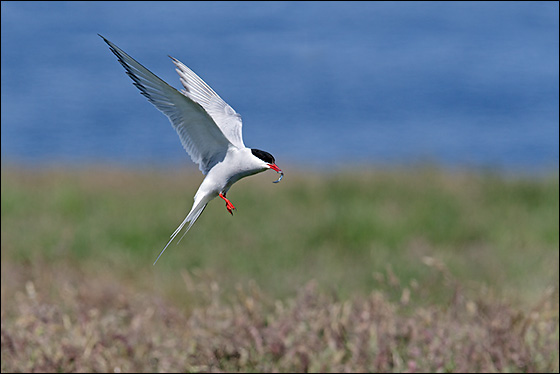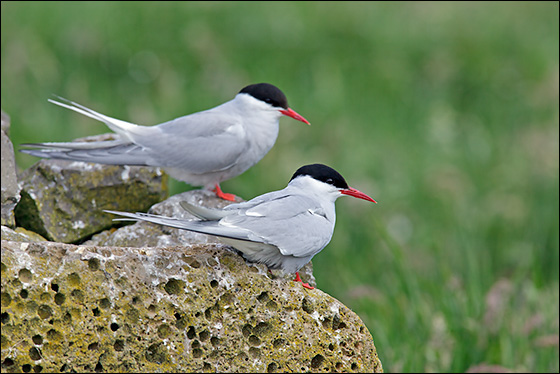Arctic Tern (Sterna paradisaea)

Despite being exposed to so much daylight, and with it so much opportunity for feeding, the Arctic Tern adheres to quite regular foraging times, usually being most active in the early morning and evening. It has a fairly varied diet, with crustaceans and insects being consumed along with the usual fish. In recent years the bird has expanded its range in the Baltic Sea by feeding on midges, which themselves are increasing because of silting up. In these areas it is trespassing into territories previously occupied only by the Common Tern. When diving for fish, Arctic Terns are characteristically more hesitant than Common Terns, often hovering several times at different heights before literally taking the plunge.
The breeding behaviour of Common and Arctic Terns is so similar that it seems remarkable that the two species hardly ever hybridise. Admittedly, the courtship of the Arctic Tern has more of an aerial element to it, with the females, for example, typically taking flight as soon as they are approached by a male. But perhaps the nesting sites are a more important factor. Arctic Terns usually nest on more barren beaches or islands than Arctic Terns and, where the two mix, the Common Terns take the grass and the Arctic Terns the bare rock (they have shorter legs). There is a climatic difference, too, with the Arctic Tern reaching into far more extreme latitudes than the Common – indeed, 60% of the breeding population is found in Iceland.
Your content goes here. Edit or remove this text inline or in the module Content settings. You can also style every aspect of this content in the module Design settings and even apply custom CSS to this text in the module Advanced settings.

